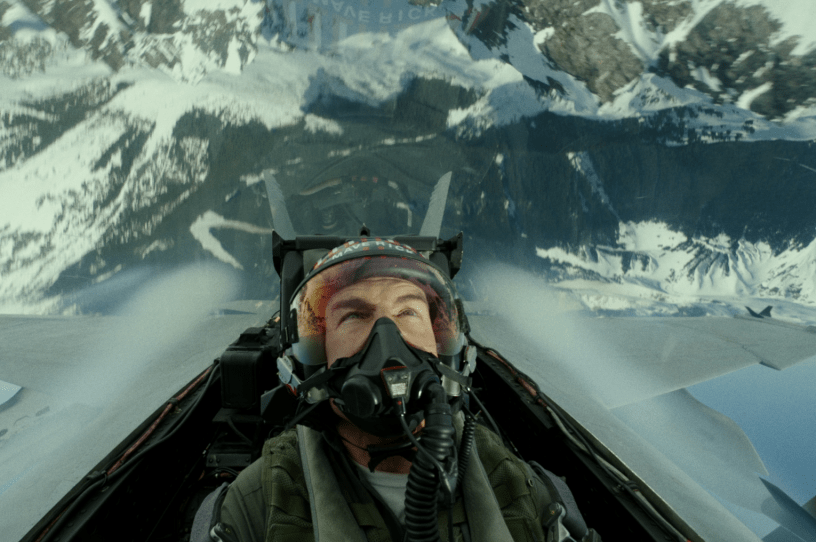The Film ‘Top Gun’ Wanted to Be

On May 12, 1986, Paramount Pictures produced a film about an elite school for the top 1 percent of United States Navy pilots. Its purpose was to make a good film about the lost art of aerial combat and to ensure that Paramount Pictures made a ton of money.
They succeeded. (On the latter point.)
Today, Paramount is trying again to create a film that succeeds on both of those fronts. The studio calls it:

1986’s Top Gun—with apologies to David French, whose ire I’ve already earned for expressing this opinion—is not a good movie. The plot is barely there, the action scenes are so-so, and the romance isn’t fleshed out enough to be remotely believable. And by “the romance,” I mean the one between Lt. Pete “Maverick” Mitchell (Cruise) and Charlie Blackwood (Kelly McGillis). The tension between Maverick and his wingman Lt. (j.g.) Nick “Goose” Bradshaw (Anthony Edwards) or Maverick and his rival Lt. Tom “Iceman” Kazansky (Val Kilmer) is far more palpable. I can only assume that the original’s outsized cultural presence is somehow tied to the fact that cocaine usage in the U.S. peaked in the 1980s.
Top Gun: Maverick is the movie that Top Gun wanted to be. It’s emotional and exciting in a way Top Gun never really was. Maverick reintroduces us to its titular character, played once more by Tom Cruise, now several decades older but looking only a few years older than the last time we saw him. After pissing off Rear Adm. Chester “Hammer” Cain (Ed Harris), Maverick’s career is saved by his former rival and now friend Iceman (Kilmer), who has risen to commander of the Pacific Fleet. Maverick is sent back to the US. Navy Strike Fighter Tactics Instructor program (aka Top Gun) to instruct a group of the Navy’s best pilots, who have been selected for a highly dangerous mission. Among the group is Lt. Bradley “Rooster” Bradshaw (Miles Teller), the son of Maverick’s old wingman Goose who died in the first film, whose mother Maverick had promised he’d stop from following in his father’s footsteps.
There are real stakes to the plot in this film, a clearly defined mission—a bombing run that’s next to impossible to take out a nuclear facility in an unnamed enemy country—and believable relational drama. Rooster resents Maverick for pulling his application to the Naval Academy, and it’s their quasi-father/son relationship that provides the heart of the film. Maverick feels guilty about Goose’s death and wants to be the father figure Rooster never had, and tries to make amends. The relationship between Rooster and Maverick is more fully fleshed out than what we see of Goose and Maverick in the first film, and their tension and work toward reconciliation is sure to put Top Gun: Maverick in the pantheon of “guy-cry” movies, alongside the likes of Field of Dreams and Brian’s Song.
Likewise, the romance between Maverick and his old flame Penny Benjamin (Jennifer Connelly) is more believable than Maverick’s love story in the first film. In Top Gun, Maverick and Charlie end up together … because. They’re attractive and in proximity to each other, and Top Gun acts as if that’s all the explanation we’ll really need. In TGM, Maverick and Penny have more than just physical chemistry: There’s a natural rapport between the two, and a playful romance develops as Maverick tries to win Penny over once again.
That TGM handles emotional story arcs better than Top Gun is almost a given considering how low the bar is. But it even manages to outdo Top Gun in the one area in which the original succeeded: Being a high-octane patriotic celebration of America and the U.S. military. Thanks to advances in technology and filmography, the visuals for the flight scenes are stunning. The dangers of high-speed flight are shown in a much more visceral way than in Top Gun, as we see even the best pilots in the Navy struggle with g-force strong enough to make them pass out. Being there in the cockpit with the pilots, and seeing the planes carry out death-defying maneuvers in the air, is a sight to behold on the big screen. The team of passionately competitive pilots at the peak of their field captures the very specific American ideals of stoic individualism combined with teamwork. Watching these pilots on their mission, up against the military of an unnamed enemy country—basically an amalgamation of Russia, North Korea, China, and Iran—is rousing in a way that’ll awaken the patriotic spirit of even the most ardent isolationists.
In conclusion: The U.S. of A. is good. America’s enemies are bad. Top Gun: Maverick kicks ass. See it, and see it on the biggest screen you can.